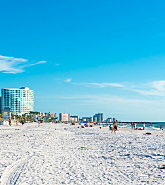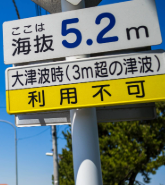On Monday 14 November 2016 Dr Robert Muir-Wood, RMS chief research officer who is an earthquake expert and specialist in catastrophe risk management, made the following observations about the earthquake in Amberley:
SCALE
“The November 13 earthquake was assigned a magnitude 7.8 by the United States Geological Service. That makes it more than fifty times bigger than the February 2011 earthquake which occurred directly beneath Christchurch. However, it was still around forty times smaller than the Great Tohoku earthquake off the northeast coast of Japan in March 2011.”
CASUALTIES, PROPERTY DAMAGE & BUSINESS INTERRUPTION
“Although it was significantly bigger than the Christchurch earthquake, the source of the earthquake was further from major exposure concentrations. The northeast coast of South Island has a very low population and the earthquake occurred in the middle of the night when there was little traffic on the coast road. Characteristic of such an earthquake in steep mountainous terrain, there have been thousands of landslides, some of which have blocked streams and rivers – there is now a risk of flooding downstream when these “dams” break.
In the capital city, Wellington, liquefaction and slumping on man-made ground around the port has damaged some quays and made it impossible for the ferry that runs between North and South Island to dock. The most spectacular damage has come from massive landslides blocking the main coast road Highway 1 that is the overland connection from the ferryport opposite Wellington down to Christchurch. This will take months or even years to repair. Therefore it appears the biggest consequences of the earthquake can be expected to be logistical, with particular implications for any commercial activity in Christchurch that is dependent on overland supplies from the north. As long as the main highway remains closed, ferries may have to ship supplies down to Lyttelton, the main port of Christchurch.”
SEISMOLOGY
“The earthquake appears to have occurred principally along the complex fault system in the north-eastern part of the South Island, where the plate tectonic motion between the Pacific and Australian plates transfers from subduction along the Hikurangi Subduction Zone to strike-slip along the Alpine Fault System. Faults in this area strike predominantly northeast-southwest and show a combination of thrust and strike-slip motion. From its epicenter the rupture unzipped towards the northeast, for about 100-140km reaching to about 200 km to the capital city Wellington.”
WHAT NOW?
“Given the way the rupture spread to the northeast there is some potential for a follow-on major earthquake on one of the faults running beneath Wellington. The chances of a follow-on major earthquake are highest in the first few days after a big earthquake, and tail off exponentially. Aftershocks are expected to continue to be felt for months.”
MODELING
“These events occurred on multiple fault segments in close proximity to one another. The technology to model this type of complex rupture is now available in the latest RMS high-definition New Zealand Earthquake Model (2016) where fault segments may now interconnect under certain considerations.”






